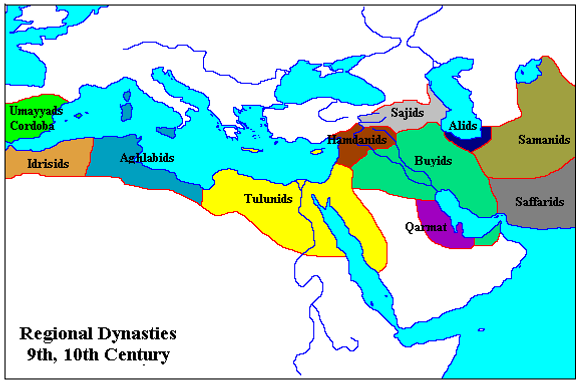
39.
Diocletian: *
He secured imperial borders (285-299 AD): defeated the Sarmatians & Carpi, the Alamanni, Egyptian usurpers and sacked Ctesiphon (Sassanid capital); negotiated a lasting & favourable peace.
Main structural reform was the provincial governance
under the Tetrarchy system, each of the 4 with their
own regional administration, capital & bureaucracy;
growth of the state government, new building projects
& military campaigns required greater revenue leading
to tax reforms (297 AD); taxation was standardized,
made more equitable & levied at higher rates.
An autocrat Diocletian ended the Republican facade, tried but
failed to curb inflation; his persecution of Christianity
failed & the tetrarchy system collapsed after his abdication.
However success in battle & regional reforms stabilized
the Empire economically & militarily, allowing its survival
for another 150 years.
40.
sham Empire: *
The crisis led to profound changes in the empire's
institutions, society, economic life & religion, especially
in the Western Empire. Urban areas suffered economic
depression & depopulation. Cities (including Rome)
now needed costly fortifications. The large, open cities
of classical antiquity transformed into smaller,
walled cities.
Rome's extensive internal trade network was disrupted.
Widespread civil unrest meant it was no longer safe for
merchants to travel or move their goods. The empire
faced hyperinflation caused by years of coinage
devaluation. Commerce became difficult with the
debased currency. Landowners, unable to export crops
began producing food for the local community & barter.
Subsistence farming replaced commercial crops. Rather
than import manufactured goods from the great urban
areas, locals began to manufacture many goods on their own estates, thus beginning the self-sufficient "house economy". Urban populations began to move out into the countryside in search of food and better protection.
The decline in commerce between the imperial provinces led to increased self-sufficiency. Large landowners (self-sufficient) were less inclined to obey Rome’s central authority, particularly in the Western Empire. The only economic resource of value came to be agricultural land and its crops. The common people of the empire lost economic and political status to the land-holding nobility, as commerce waned so too did the commercial middle class.
41.
Caliphate: (and Diocletian’s transformation):
Early on the caliphate showed signs of fracture amid the
rise of regional dynasties. The Abbasids soon became
caught in a 3 way rivalry among Coptic Arabs, Indo-Persians,
and immigrant Turks. The cost of running a large empire
became too great. The political unity of Islam began to
disintegrate. The Turks, Egyptians & Arabs split into the Sunni
branch; the Persians, many Turks & several of the
Indian princes became Shia. The Abbasid Caliphate evolved
into an Islamic monarchy (unitary system of government.);
the regional Sultanate and Emirate governors' existence
& legality were acknowledged for the sake of unity.
Independent dynasties appeared & were recognized as
legitimately Muslim. The first was the Tahirid dynasty in
Khorasan; similar dynasties included the Saffarids,
Samanids, Ghaznavids & Seljuqs (who conquered
Bagdad 1055).
42.
Revennate mosaics: *
San Vitale is one of the most important surviving examples of Byzantine
architecture and mosaic work. It was begun in 526 AD under
Ostrogothic rule. It was consecrated in 547 and completed soon after.
The cross-shaped chapel is preceded by a small barrel-vaulted
rectangular vestibule, entirely covered with marble in its lower
part and decorated with mosaics at the top.
43.
arabesque: *
Stone relief with arabesques of tendrils, palmettes and half-palmettes
in the Umayyad Mosque, Damascus
44.
Constantinian high relief: *
After moving through a late 2nd century "baroque" phase in the 3rd century, Roman art largely abandoned sculpture in the classical tradition. Even the most important imperial monuments now show stumpy, large-eyed figures in a harsh frontal style, in simple compositions emphasizing power at the expense of grace. The contrast is illustrated in the Arch of Constantine (315 in Rome), which combines sections in the new style contrasting with sculpture in the earlier full Greco-Roman style taken from elsewhere. This revolution in style came just before the period in which Christianity was adopted by the Roman state & most of the people,
The horizontal frieze below the round reliefs (roundels) is from the time of Constantine; it runs around the monument, one strip above each lateral archway & includes the west and east sides of the arch. These historical reliefs depict scenes from the Italian campaign of Constantine against Maxentius which was the reason for the construction of the monument. These 6 panels sit below the Roundels & are smaller; their scenes are crowded (unlike the earlier work), filled with fighting soldiers, groups of senators & citizens in crowds (in one case over 50 people). The figures are small, not close to life size.
In contrast the sculpture of the 4 roundels & upper reliefs are in high relief. The projection of the figures from the background surface is significant & notable, the depth of the sculpture is clearly visible, whether one looks from the sides or front. In fact, if it is a very high relief sculpture, many elements may even be completely detached from the background. Light and shadow effects are salient features of high relief sculpture, owing to its prominent depth.






2 roundels dating from Hadrian (117 to 138 AD) Constantine’s horizontal frieze (315 AD)